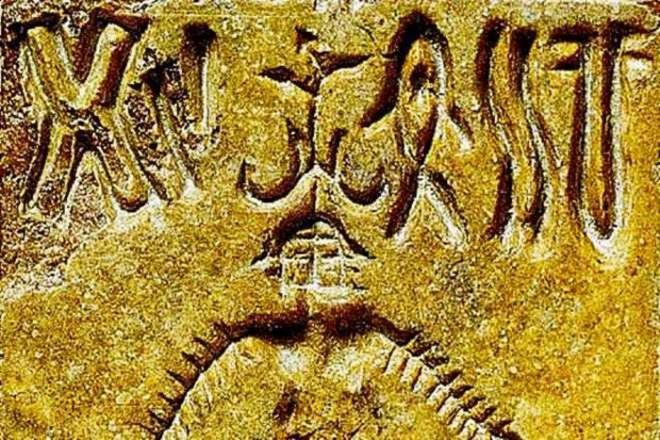OF THE
TIMES

Until that point in time, the Britons had held control of post-Roman Britain, keeping the Anglo-Saxons isolated and suppressed. After the Romans were gone, the Britons maintained the status quo, living in towns, with elected officials, and carrying on trade with the empire. After AD 536, the year reported as the "death of Arthur", the Britons, the ancient Cymric empire that at one time had stretched from Cornwall in the south to Strathclyde in the north, all but disappeared, and were replaced by Anglo-Saxons. There is much debate among scholars as to whether the Anglo-Saxons killed all of the Britons, or assimilated them. Here we must consider that they were victims of possibly many overhead cometary explosions which wiped out most of the population of Europe, plunging it into the Dark Ages which were, apparently, really DARK, atmospherically speaking.But following this upheaval, during which there may have been places of refuge, for some, there arose a period quite different to our own, so much so that, even in our age of information and 'diversity', we're still struggling to understand the people of the Middle Ages. R. G. Collingwood in Speculum Mentis writes:
The men of the middle ages, as we look back on them, appear to us half children and half giants. In the narrowness of their outlook, the smallness of the problems they faced, their fanciful and innocent superstition, their combination of qualities and activities which a reflective or critical society would find intolerably contradictory, they are children, and it is difficult for us to believe that human beings could be so simple. But in the solid magnitude of their achievements, their systems of law and philosophy, their creation and organization of huge nation-states, their incredible cathedrals, and above all their gradual forging of a civilized world out of a chaos of barbarism, they seem possessed by a tenacity and a vastness of purpose that we can only call gigantic. They seem to be tiny people doing colossal things.See also:




Comment: Elizabeth I's aptitude for translating as well as her interesting milieu is noted in Laura Knight-Jadczyk's article The True Identity of Fulcanelli and The Da Vinci Code: And check out SOTT radio's:
- SOTT Podcast: From the Pentagon Strike to the Da Vinci Code - Part 1
- SOTT Podcast: From the Pentagon Strike to the Da Vinci Code and Sex Part 2
Also available in full on YouTube here.See also: Long-lost overpainted portrait reveals young Queen Elizabeth I